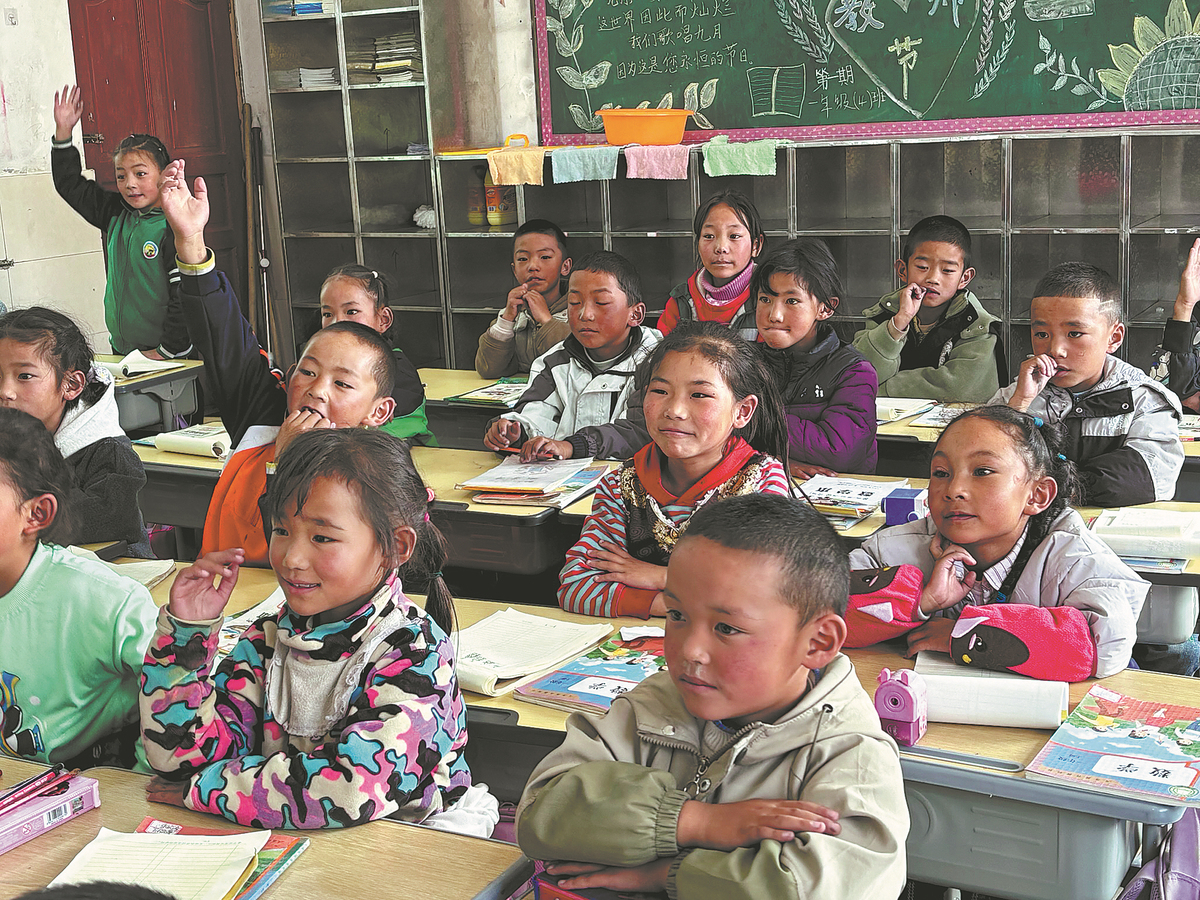Decades of progress boost Nagchu living standards


Nagchu city in the northern part of the Xizang autonomous region has made major gains in infrastructure, education, health and living standards over the past few decades, local officials said on Tuesday.
According to figures released at a news conference in Lhasa, the regional capital, the city's GDP rose from 295 million yuan ($41 million) in 1990 to more than 24.6 billion yuan in 2024. During the same period, the per capita disposable income of urban residents grew from 1,755 yuan to 55,499 yuan, while the figure for rural residents climbed from 411 yuan to 20,099 yuan.
Li Meng, vice-mayor of Nagchu, said the city has made great progress in infrastructure over the past 60 years. A "heavenly corridor "consisting of five vital lines — highways, railways, oil and gas pipelines, fiber-optic cables and power lines — runs through the city.
The industrial structure of the city has been optimized and upgraded.
"We have achieved a significant transformation from a single nomadic industry to diverse development that includes clean energy, specialty agriculture and animal husbandry, and cultural tourism," he said.
Li emphasized that livelihoods for citizens have improved significantly over the past 60 years.
"The general populace, including officials and citizens, all enjoy equal chances of receiving better childcare, education, employment, healthcare, elderly care, housing and support for the vulnerable," he said.
The retention rate for compulsory education and the enrollment rate for children with disabilities have reached 98 percent and 100 percent, respectively. Medical and health institutions now provide full coverage at the county, township and village levels, Li said.
The participation rates for basic medical insurance and basic pension insurance have remained stable at more than 99 percent and 98 percent, respectively, he added.
Phuntsok, director of the city's development and reform commission, said authorities have prioritized education. With increasing investment each year, the number of schools at all levels has reached 462.
"We have been continuously enhancing the capacity and level of primary healthcare services, building on the comprehensive implementation of basic medical insurance policies for urban and rural residents. They offer free treatment for diseases such as cataracts, Kashin-Beck disease, hip and knee joint replacement, and congenital heart disease," Phuntsok said.
Local residents say they have seen the changes firsthand.
Tsering Karma, a 70-year-old villager in Machu township in Amdo county of Nagchu, said dramatic transformations have taken place in his hometown in terms of telecommunication, transportation, electricity and drinking water.
"Thanks to our country's overall development in recent decades, my hometown has been prospering as well, with people's livelihoods largely improved and ecological protection work further enhanced in the new era," he said.
"The quality of living, housing and education has improved dramatically. The government provides 15-year free education to all the children from preschool to high school, so everybody has the chance to receive better education," he added.
- Decades of progress boost Nagchu living standards
- Threat of floods remains after peak season ends
- Foreign singers strike a chord in Chinese show
- Chinese rocket carries innovative Mexican satellites into orbit
- China works to develop itself into an all-around sporting powerhouse
- Granddaughter retraces family roots back to Henan





































